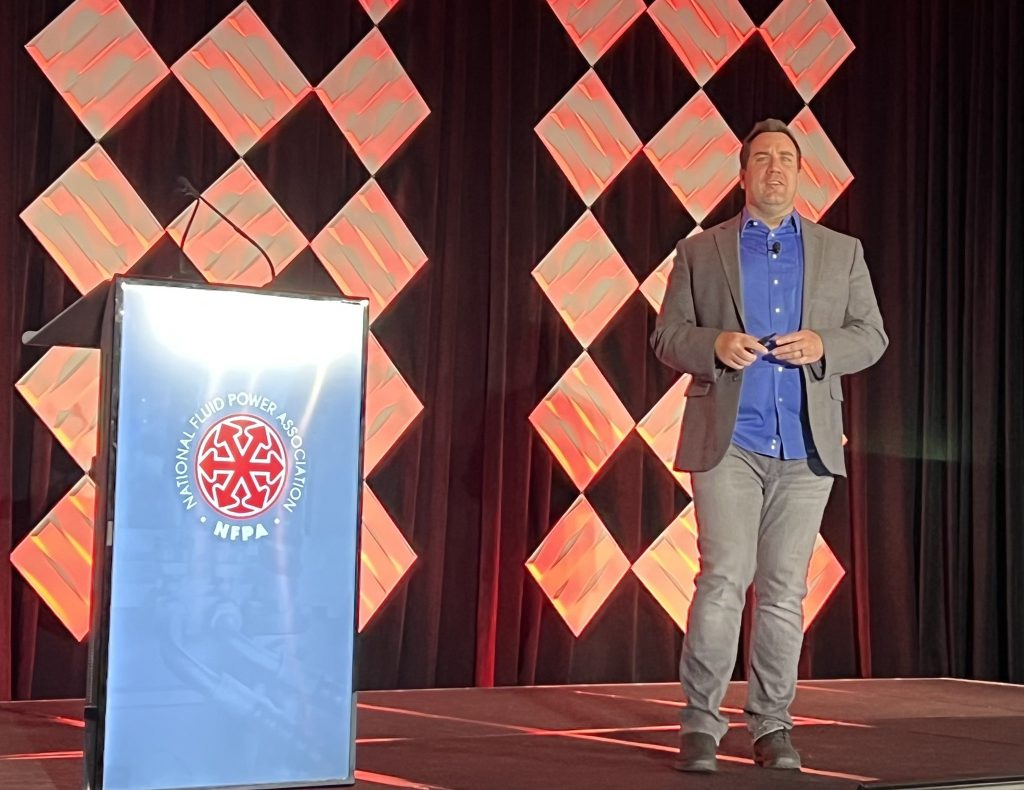 At this month’s NFPA Annual Conference, bestselling author David Burkus spoke to the attendees on “Leading high-performance teams from anywhere” and provided a lot of great advice for anyone in a management position. He acknowledged that Covid had forced many companies to rethink policies for remote work for eligible employees. And now employees expect more flexibility and work life balance.
At this month’s NFPA Annual Conference, bestselling author David Burkus spoke to the attendees on “Leading high-performance teams from anywhere” and provided a lot of great advice for anyone in a management position. He acknowledged that Covid had forced many companies to rethink policies for remote work for eligible employees. And now employees expect more flexibility and work life balance.
What does this mean for team leaders? Burkus noted that when you understand the context of what people are working with at home, you better understand their availability and how they work best. Do they have kids? Are they living with an elderly parent? Knowing more about what they have going on in their lives allows you to help structure a work plan that will keep them more productive — and that will likely keep them as loyal, dependable workers for many more years.
Here were three other thoughts that Burkus had for leaders in this new world of work:
- On some level, getting people back in person matters. However, it doesn’t matter all the time. Most organizations will probably end up in a hybrid work mode. But many are thinking about this in the wrong way, focusing on what percentage of time can people still work offsite? Or what days do you want people onsite? Burkus said that what you should be thinking about are tasks. What tasks work better when people are together versus apart? Tasks where people must come up with ideas, solve problems, and brainstorm with each other still work better in person. Tasks where you simply need to present information to people, such as training and certifications — those tend to work better in a virtual environment.
- Don’t focus so much on when people are working versus not working anymore. The thing you should care about is knowing when people are responsive versus non-responsive. That way, you know you’re not chasing them down at times when they’re non-responsive — and getting frustrated by a lack of response. Learn and know what times you can expect an immediate response.
- Develop a regular rhythm of asking, “Hey, what’s blocking your progress? I know Project X is what you’re focused on, but what are the potential hurdles that you see?” Share that, not to an individual manager or supervisor, but to the whole team — so that other people on the team are aware of it and can offer help. First, this solves the problem faster, but it also helps people feel like they’re a team again. It reminds them that we’re doing this on a team-wide level. There are very few fully individualistic roles anymore. Almost everything is a team sport, and you must continually foster that sense of shared identity.
Burkus explained that it’s important to make a culture where people want to stick around — and want to be engaged. “People want to put forth effort,” he said. “Make a culture that’s willing to be more flexible in whatever the plans are, as they change.” When you create a culture of shared identity, you end up building a stronger team — and we all win as a result.
Filed Under: Fluid Power World Magazine Articles